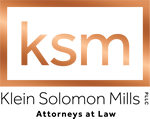
First, all employers must ensure that all places of employment, including passageways, storerooms, service rooms, and walking and working surfaces are kept in clean, orderly, sanitary and safe condition. All employers must have an employee alarm system for fires and other emergencies, and keep adequate first aid supplies readily available. In addition, employers must ensure that exits meet the minimum requirements set by OSHA so that all employees may evacuate safely in an emergency.
Employers also must have emergency action plans and fire prevention plans for their offices or other facilities, and they must communicate these plans to employees. Generally, these plans must be in writing, kept in the workplace, and available to employees for review; although, employers with 10 or fewer employees may communicate the plans orally to employees. Further, employers must designate and train certain employees to assist in a safe and orderly evacuation of other employees according to the emergency action plan.
At a minimum emergency action plans must include: procedures for reporting a fire or other emergency; procedures for emergency evacuation; procedures to account for all employees after evacuation; procedures to be followed by employees performing rescue or medical duties; and the name or job title of employees that other employees may contact for more information.
Fire prevention plans are less applicable in an office setting but, nonetheless, required. These plans must include, among other things: a list of all major fire hazards and the type of fire protection equipment necessary to control each; and the name or job title of employees responsible for maintaining equipment to prevent or control ignition sources or fires and those responsible for the control of fuel source hazards.
The Department of Labor’s Occupational Safety and Health Administration, also called OSHA, is responsible for enforcing the Act. Some of the Act’s reporting requirements apply to businesses that operate in an office setting. At a minimum, all employers must report to the Administration any workplace incident that results in a fatality (report within 8 hours), or hospitalization of an employee, amputation or loss of an eye (report within 24 hours). If the fatality or hospitalization are the result of a heart-attack, you must still report the incident to OSHA for them to determine whether to investigate.
Because employee safety and accident prevention are priorities, OSHA, the Administration, has initiatives to educate employers and help them comply. OSHA’s Consultation Program operates separately from its audit and inspection divisions so that employers may seek confidential advice, without risk of citations or penalties. The employer’s only obligation is to correct serious job safety and health hazards. Local area OSHA offices are also available to offer advice and education to employers, especially small businesses.
*Photo credit: <ahref=”http://foter.com/re/3427fd”>foter.com</a>
The information contained on this blog is not legal advice, nor does this blog create an attorney-client relationship. Klein Bussell attorneys do not blog about pending matters handled on behalf of our clients and will never disclose client confidences.
The information contained in this blog does not constitute legal advice, nor does this blog create an attorney-client relationship. KSM attorneys do not blog about pending matters handled on behalf of our clients and will never disclose client confidences.




